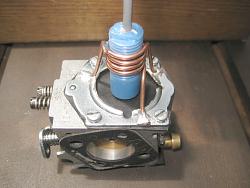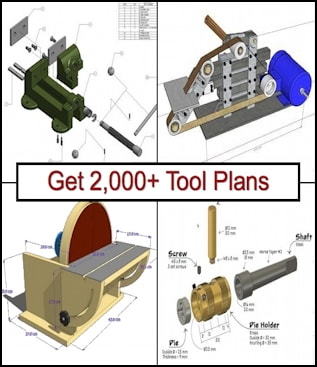As you gents may know there are several types of carburetors, diaphragm type, gravity fed type, and injection type(perhaps this may not be classified to the carburetors though). I used to have a lot of discussion at a forum where we tinker small engines of saws, on a theme that how a diaphragm acts in operation. Does it move constantly along with the movement of piston that goes up and down in every cycle of the shaft sits in the middle of mechanism ?, or it keeps moving until it comes to a certain spinning speed and stays/sits still in higher speed than this?
So I made this system to see how it acts in operation from lower spinning speed when it idles to some higher speed like 7000rpm.
The total system looks like this;
at the left you see a saw sitting with some attachments on the top cover, which is a displacement detector unit also shown below.
Within the small blue plastic cylinder there are a couple of coils,
and this coil emits magnetic force from the black part outward.
Showing a illustration to the way detecting the movement.
(to be continued...)
Chy


 LinkBack URL
LinkBack URL About LinkBacks
About LinkBacks






 Reply With Quote
Reply With Quote














Bookmarks